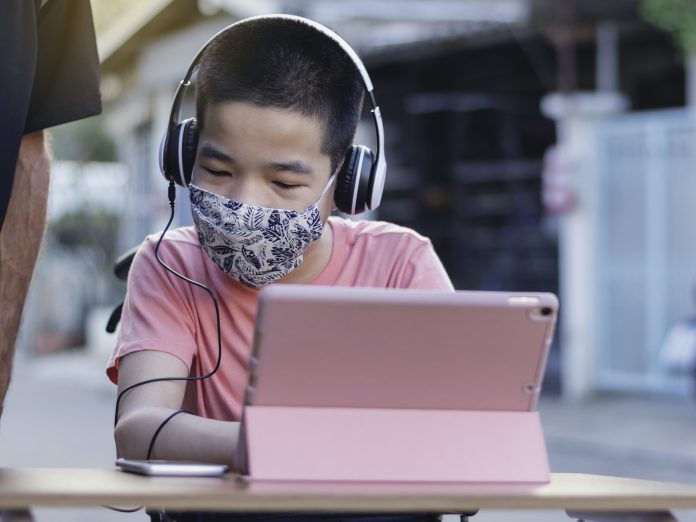As students in some areas return to in-person education, focusing on supporting students with special needs and disabilities remains a priority for transportation leaders.
Over the past couple of months, several news headlines have focused on the lack of services students received in the spring during school closures. Especially impacted were students with special needs, as schools shut down for in-person learning in the middle of March. Several lawsuits against school districts resulted, claiming that students didn’t receive services required by their Individualized Education Program (IEP.)
Therapy sessions weren’t provided or were inconsistent, and one-on-one time with their teachers was lacking. However, as school districts were navigating unchartered waters of COVID-19, so were the parents, who were forced to juggle their regular day jobs with supervising their children’s virtual education. This challenge continues, as many school districts start the new school year with a virtual learning model.
However, not all the news coverage was bad. Some teachers took time away from their computers to visit the homes of students who were struggling with online classes. Videos of teachers communicating with students through windows or sitting six feet apart while outside went viral.
This topic piqued the interest of Linda Jacobson, a senior writer for The74, a nonprofit news website that covers public education across the U.S. She began interviewing families of students with special needs and reported their positive, negative and indifferent experiences with virtual learning. She discussed her findings during a Student Transportation Aliened for Return to School (STARTS) Task Force webinar on Tuesday.
After schools closed in March, one family she spoke with said they didn’t hear from the district for weeks. The mother shared with Jacobson that she had to initiate contact before she would learn any information.
Other families were pleasantly surprised by their child’s behavior while at home during school closures, noting that the social triggers that often occur were now absent. Yet at the same time, these children were missing out on much-needed IEP services, such as speech therapy. Family members shared with Jacobson that while they appreciate the option of being able to still send their children to school, while other students must remain home, they’re struggling to maintain a balance between educational and therapy or medical services.
Jacobson said one commonality she found during her reporting was that school districts with strong technology programs already in place – such as providing each student with a computer or tablet to take home – transitioned easier and more efficiently into virtual learning models because teachers were already comfortable in those environments.
Subsequently, technology served as a conduit rather than a barrier. Those schools were able to keep their students on a schedule and check-in with families more often.
How Transportation Is Involved
Dr. Linda Bluth, a consultant to the Maryland State Department of Education Division of Early Intervention Services/Special Education, discussed during Tuesday’s webinar how school districts can balance on-site and online learning, and how transportation can best respond to requirements placed on it. She noted that having conversations with parents is the first step, and transportation services need to be discussed early on.
As schools nationwide start reopening their doors for in-person education, some are remaining virtual. Not waiting to see if student transportation needs have changed since the pandemic is paramount, said Bluth, who is also a past-president of the National Association for Pupil Transportation and a member of the organization’s Hall of Fame. She explained that some students may have not needed transportation services before the pandemic, but now they do.
Bluth explained that there needs to be clear, consistent messaging across all school district departments, and transportation shouldn’t be solely responsible for answering all parent questions. She said parents should also be accountable for figuring out their child’s school bus stop location and not sending their child to school with a temperature. She noted parents should also be consulting with pediatricians about whether their child should attend in-person education.
She noted that districts may need to break up school bus stops if socially distancing is not possible. Bluth advised districts to get answers early on and to be transparent with parents. She said proactive districts will foster conversations between special education and transportation to aide in a smoother school district reentry plan.
She added Maryland transportation directors have been very proactive throughout the health crisis. Instead of saying they can’t do something, she explained, they are instead seeking solutions to make it happen.
Related: AAP Advises Against Disinfecting Child Safety Restraint Systems
Related: Getting Back to School Requires Drastic Changes
Related: STARTS Task Force Discusses School Bus Barrier Implementation, OEMs Weigh In
Related: COVID-19 Adds Challenges to Task of Transporting the Most Vulnerable Passengers
Related: Experts Share COVID-19 Best Practices for School-Bus Child Safety Restraint Systems
She said now is the time, more than ever, to act as a team and make transportation part of the school day. She explained that occupational and physical therapists as well as behavior specialists may need to be involved in the loading and unloading process, depending on the on a student’s disability. She advised districts to have a plan in place to ensure faculty members meet students at each building’s school bus unloading zone to ensure social distancing is maintained into the building.
As a final thought, Bluth advised districts to have policies and procedures in place as well as a backup plan. She said bus drivers need to feel comfortable, safe and empowered during the return of students to schools.
She added there needs to be a plan in place for when a student passenger tests positive for COVID-19 and if temperature checks will be conducted prior to boarding. Most of all, she advised districts to listen to what people are saying, come up with solutions, and remain flexible.














